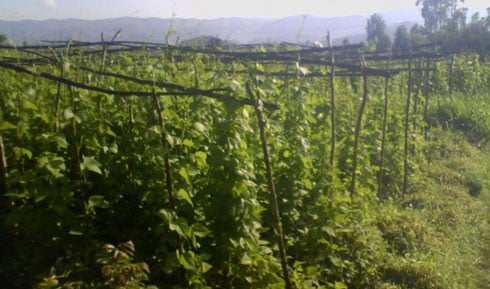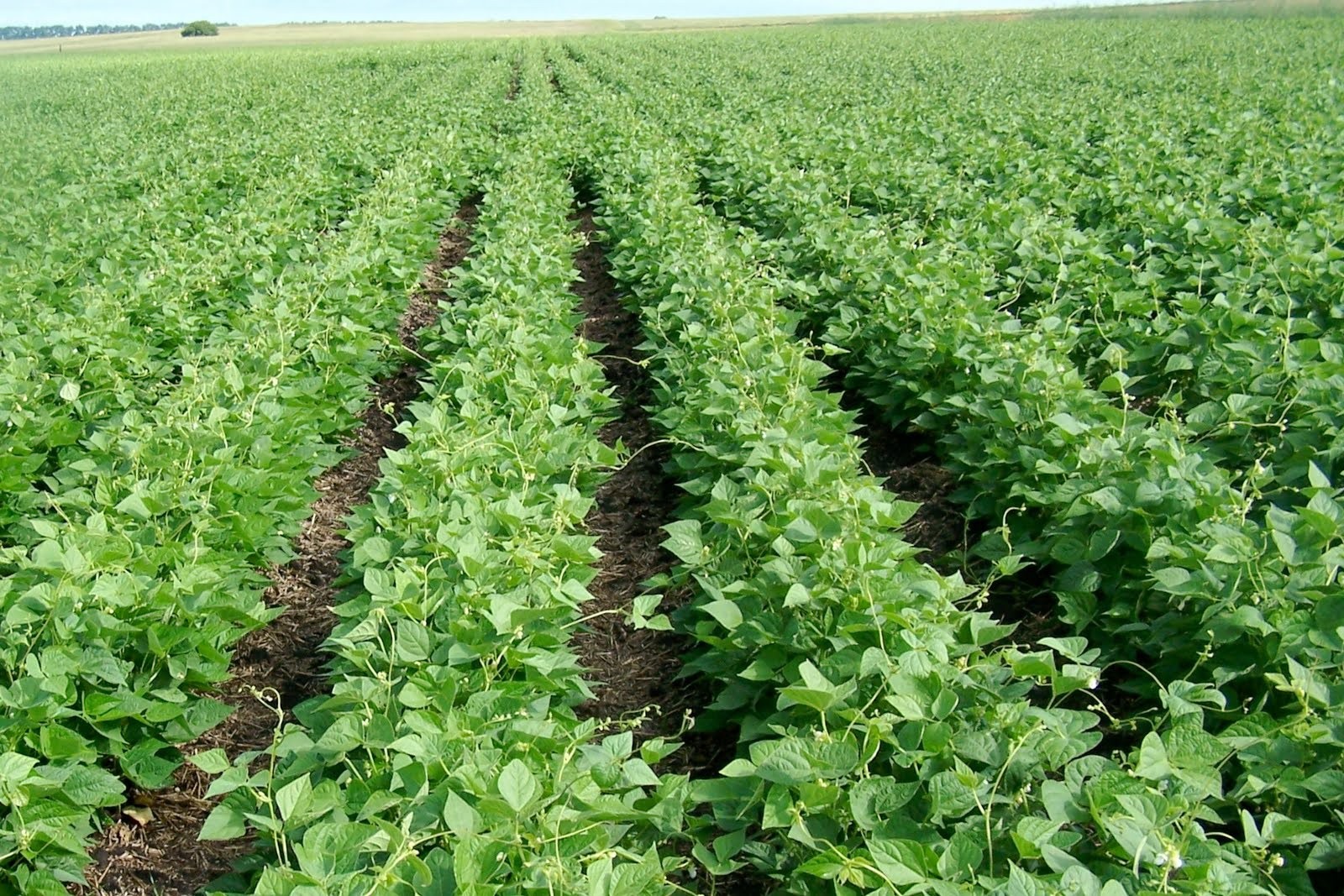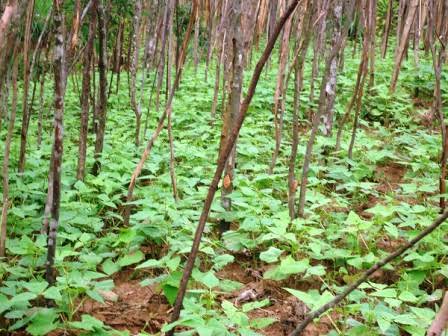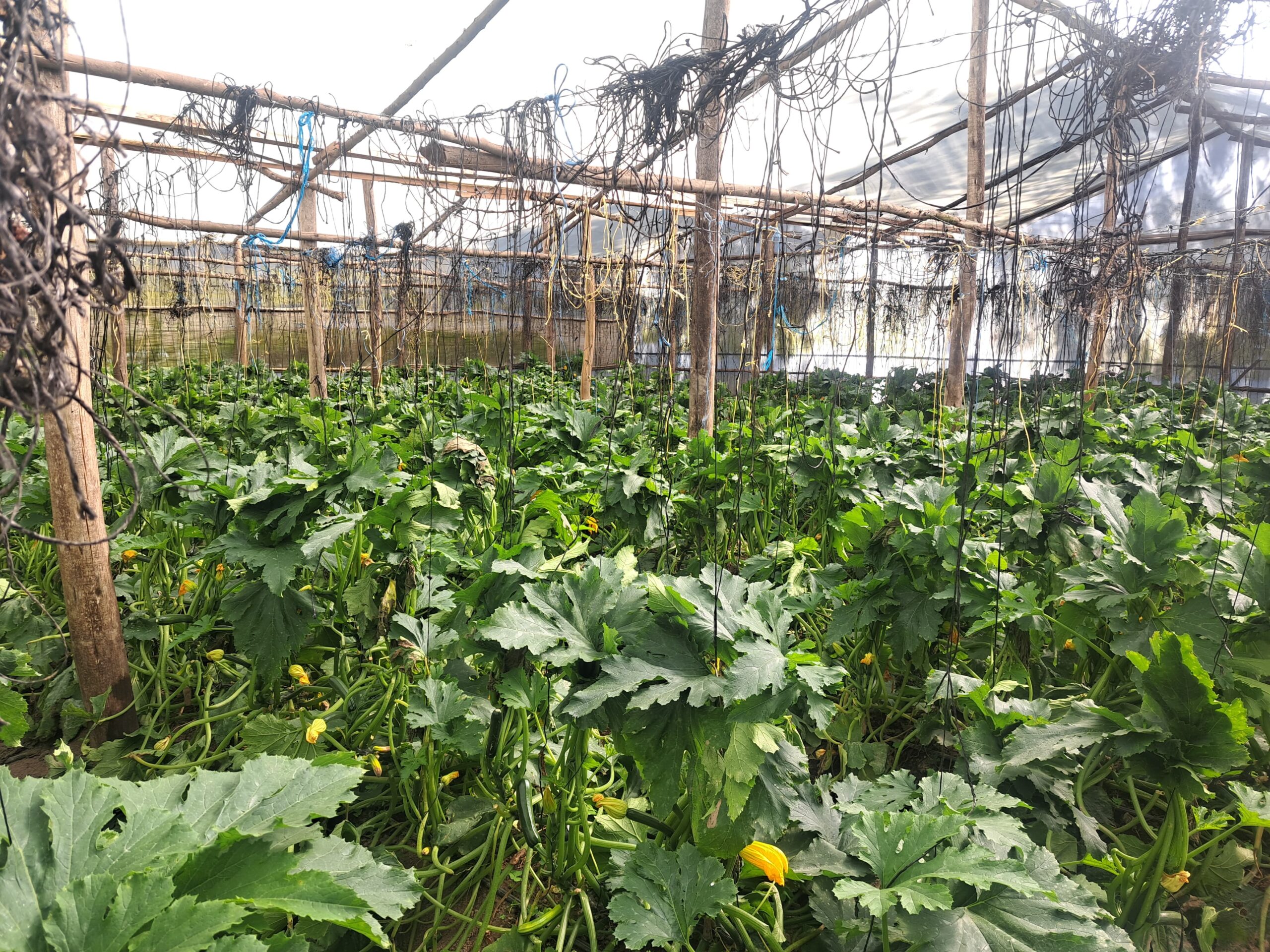Rope Farming as a strategy to increase yields and combat Climate Change
The practice of supporting climbing crops on trees using ropes is increasingly seen as a solution to reduce deforestation and the cutting of young trees, which previously contributed to climate change impacts such as prolonged droughts and excessive rainfall.
Crops such as beans, tomatoes, and various types of fruits often require trees for support so they can grow properly. Without these supports, crops risk falling to the ground, reducing yields and increasing vulnerability to pests and diseases influenced by local climatic conditions.
In many agricultural regions of the country, studies show that at least 28% of trees are cut down for use by farmers, mainly each planting season (A and B seasons). Although the Rwanda Forest Authority (RFA) has a goal to increase forest cover to 30% by 2050, this target may not be met due to the growing number of farmers who require wood for cultivation.

Marie Grace Wishavura, an environmental officer in Musanze District, notes that cutting forests for farming provides a short-term solution but can lead to long-term losses.
She says: “When farmers cut trees to support beans or other crops, they don’t consider maturity or proper growth. It may help that season, but because small shoots are cut, in subsequent years they face droughts, excessive rainfall, soil erosion, and crop rot, resulting in losses.”
She adds: “Reduced forest cover exposes crops to harsh sunlight or strong winds, as trees no longer provide protection. Farmers who conserve the environment also prevent wildlife from destroying crops, as animals find hiding spaces and do not consume crops in protected areas.”
Many farmers, especially those growing tomatoes and vegetables like beans, report suffering the effects of climate change, harvesting smaller yields due to heat or soil erosion. These challenges have prompted some projects to adapt new farming techniques.
For example, the Green Gicumbi Project in Gicumbi District has implemented measures such as contour terracing on steep slopes, constructing small water retention pits, and planting trees mixed with crops to prevent soil erosion, including planting protective hedges around fields.

In Gicumbi, 2,050 hectares of forests have been rehabilitated, trees mixed with crops have been planted, 3,000 water pits have been dug, and 600 hectares of contour terraces constructed.
This method of environmentally friendly farming, which reduces forest loss and mitigates climate change effects, is supported by local agronomist and farmer Emmanuel Dushimiyimana from Musanze District.
He practices this system in Muhoza Sector, Kigombe Cell, Nduruma Village, initially experimenting with beans and reporting increased yields.
He says: “Supporting vegetables and fruits with ropes is something I learned in school, but many farmers don’t implement it. I decided to try it, as the conventional method of using trees has challenges like loss, theft, and premature aging. Using ropes seems more effective, especially for beans, often called ‘foundation crops’.”
Emmanuel explains that while tree-based support and rope support are related in aiding crops, they require slightly different approaches.
He adds: “Both provide crop support, but ropes require planting in rows, unlike traditional tree support. Row planting makes it easier to manage crops until harvest.”
He notes that conventional planting can limit pesticide application, fertilizer distribution, and sunlight penetration, reducing productivity. Ropes, however, are durable for at least 5–6 years, compared to two seasons for tree supports.

Emmanuel emphasizes that this approach aligns with government and international environmental programs to conserve forests while promoting sustainable farming.
He says: “I started this initiative questioning how I could farm without damaging the environment. Many people cut small branches for crop support, leaving the land exposed. Using ropes may not be perfect, but it helps produce food while protecting the climate.”
According to him, this method is gaining traction among farmers, accelerating forest restoration efforts.
He explains: “A standard field may need 1,000 trees, but using ropes requires only 20, allowing space for pathways, fertilizer application, and pest control. Although initial costs of rope supports are around 30,000 RWF, they are reusable and reduce theft risks compared to cutting trees.”
Dieudonne Ingabire, a Master’s candidate in Project Management specializing in Agriculture, says that rope farming is key to preventing climate degradation by reducing the need to cut trees for crop support.
ALSO READ:https://www.greenafrica.rw/more-than-8000-square-kilometers-of-rwandas-land-now-covered-with-trees/
She explains: “Farmers traditionally cut trees for supports, but sustainable farming teaches methods that preserve forests and contribute positively to the climate. Rope farming is essential to protecting forests and controlling pests, as it allows timely intervention when problems arise.”

She adds: “Agriculture should lead in forest conservation, as it directly benefits rainfall, crop growth, wildlife management, eco-tourism, and air quality.”
Jean de Dieu Nshimiyimana, an environmental and forestry expert, notes that this system can increase forested areas and help mitigate climate change impacts.
He says: “Government programs provide tree seedlings, but many farmers lack access and resort to cutting or uprooting trees, which harms growth. Properly installed rope systems last longer, reduce losses, and ensure crops grow stronger.”
Emile Mukunzi, Bugesera District environmental officer, emphasizes that research and innovation are essential for promoting sustainable farming that mitigates climate-related challenges.
He notes: “Ropes are often used in greenhouses for tomatoes and peppers, making crop management easier while conserving trees for different planting seasons.”
He stresses the importance of awareness campaigns and research to help farmers adopt rope systems, which protect trees, reduce costs, improve air quality, attract rainfall, prevent soil erosion, and boost yields.

The Rwanda Agriculture Board (RAB) prioritizes training farmers on environmentally friendly farming to increase productivity, protect crops, and promote forest restoration.
AlSO READ:https://www.greenafrica.rw/clean-energy-from-waste-a-step-toward-a-greener-rwanda/
The Ministry of Environment explains that sustainable farming reduces unnecessary tree cutting, protects soil through terracing, water retention, and tree planting, and complements reforestation programs, thereby enhancing climate resilience.
The Rwandan government has introduced programs to restore degraded land, increase forest cover, and support farmers in environmentally responsible agriculture. In 2024–2025, over 65 million trees were planned to be planted nationwide to combat erosion and climate change.

The government aims to restore 2 million hectares of degraded land by 2030 through tree planting, soil conservation, and climate-adapted farming.
Additionally, the 2004 Forest Policy, revised in 2018, promotes forest expansion, sustainable agriculture, and climate change mitigation.
Rwandan law requires permits for tree cutting, ensuring environmentally responsible practices, tree replacement, and sustainable agriculture, thereby supporting long-term productivity and forest conservation.
